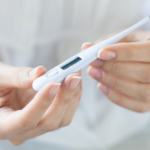Sadly, in our consultations with silicone breast augmentation patients, rheumatologists became gatekeepers instead of allies. We did not heal, because we didn’t understand. And even if we did, our training didn’t prepare us for the emotional deluge, the unremitting pain our patients experienced.
Milly, I think, got it. She began to see a therapist again and was diagnosed with recurrent post-traumatic stress disorder. Once she understood how anger, stress and uncertainty could feed into musculoskeletal pain, she was able to keep the symptoms from overwhelming her. She decided to keep the breast implants and joined a support group for depression. I suggested that she try to swim at the local YWCA, and six months later, she proudly announced she routinely swam 30 laps every Monday, Wednesday and Friday.
I wish I could say that her symptoms melted away. They didn’t. Even with exercise, counseling and medications, she was in that gray world of neither altogether well, nor entirely symptom free. But she was better.
The last time I saw her, she told me that her husband, Stanley, was still a “good guy.” She had withdrawn from the silicone breast implant suit. And as she was leaving, she wanted me to know that she was working on forgiving the man who shot her mother. It was hard work, she said, but every day she felt a little better.
Charles Radis, DO, is clinical professor of medicine at the University of New England, College of Osteopathic Medicine and employed part time at Maine Coast Memorial Hospital in Ellsworth, Maine.
References
- Schleiter KE. Silicone breast implant litigation. Virtual Mentor. 2010 May 1;12(5):389–394.
- Kumagai Y, Shiokawa Y, Medsger TA Jr., et al. Clinical spectrum of connective tissue disease after cosmetic surgery: Observations on eighteen patients and a review of the Japanese literature. Arthritis Rheum. 1984 Jan;27(1):1–12.
- Carlsen W. Jury awards $7.3 million in implant case: Verdict in 1976 surgery favors Sebastopol. San Francisco Chronicle. 1991 Dec 14:A13.
- Angell M. Shattuck Lecture—evaluating the health risks of breast implants: The interplay of medical science, the law, and public opinion. N Engl J Med. 1996 Jun 6;334(23):1513–1518.
- Gabriel SE, O’Fallon WM, Kurland LT, et al. Risk of connective-tissue diseases and other disorders after breast implantation. N Engl J Med. 1994 Jun 16;330(24):1697–1702.
- Sanchez-Guerrero J, Colditz GA, Karlson, EW, et al. Silicone breast implants and the risk of connective-tissue diseases and symptoms. N Engl J Med. 1995 Jun 22;332(25):1666–1670.
- Nyrén O, Yin L, Josefsson S, et al. Risk of connective tissue disease and related disorders among women with breast implants: A nation-wide retrospective cohort study in Sweden. BMJ. 1998 Feb 7;316(7129):417–422.
- Hennekens CH, Lee IM, Cook NR, et al. Self-reported breast implants and connective-tissue diseases in female health professionals. A retrospective cohort study. JAMA. 1996 Feb 28;275(8):616–621.
